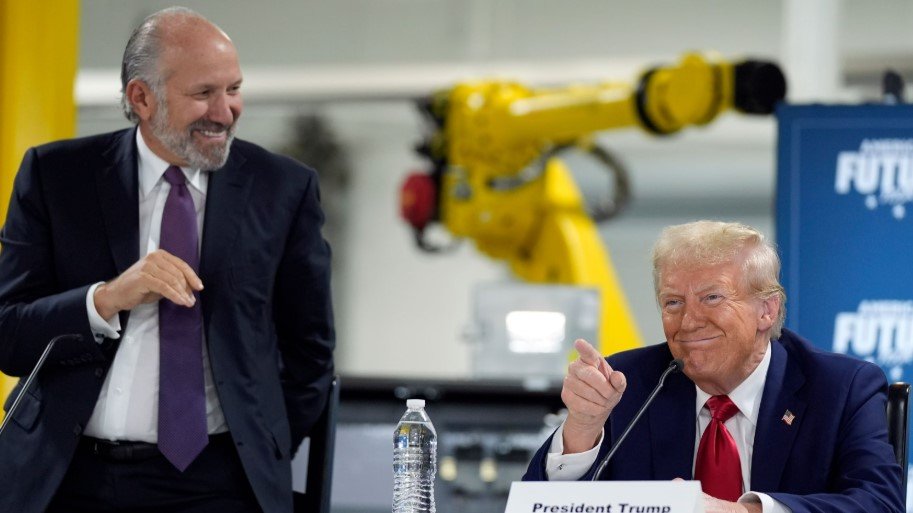Commerce Secretary projects optimism over rapid bilateral agreement as next round of talks nears
US Commerce Secretary Howard Lutnick isn’t known for sugarcoating. But this time, the optimism in his words was unmistakable—and for good reason. Speaking Monday at the US-India Strategic Partnership Forum in Washington, Lutnick signaled that a trade agreement between India and the United States could be finalized much sooner than expected.
India, he said, is pushing hard to be among the “earlier countries” to strike a deal—something the US government appears to be more than open to. If this pace holds, it could mark a sharp break from the usual, glacial tempo of trade negotiations.
A Rare Speed in Trade Diplomacy
Let’s be honest—most trade agreements crawl along, bogged down by red tape and political calculations. But Lutnick painted a different picture.
Deals that usually drag on for two or three years? The US wants them done in a month now. That’s what he said—plain and simple. And India, he noted, isn’t just showing up. It’s hustling.

In a room packed with policymakers and corporate leaders, Lutnick said: “Earlier countries get a better deal. That’s the way it is.” That off-the-cuff remark wasn’t just a soundbite—it was a signal. The implication? India is in the fast lane.
One official close to the matter said the “not-too-distant future” could actually mean this summer. That’s lightning fast by diplomatic standards.
High Stakes, Big Smiles
Now, here’s where things get interesting. Behind the public optimism lies a set of high-stakes conversations between the world’s largest democracies. Trade isn’t just about tariffs and exports anymore. It’s about semiconductors, supply chains, green energy, AI, and yes—even digital taxes.
Kumar Mangalam Birla, one of India’s most prominent industrialists, echoed the good vibes. “He sounded really positive about the Indo-US future,” Birla said, referring to Lutnick. The chemistry between Prime Minister Narendra Modi and President Trump, he added, “really helps in doing things together.”
That personal rapport could matter more than we think.
Here’s what’s reportedly on the table for both nations:
-
Tariff relaxations on select goods
-
Joint frameworks for AI regulation and data transfers
-
Incentives for US companies to manufacture in India
-
Reciprocal easing of market access rules in agriculture and pharma
Next Round: All Eyes on June 5–6
The real action starts in New Delhi this week. A US trade delegation is set to land in India on June 5 and 6, according to government sources cited by ANI. This meeting will focus on finalizing terms of the Bilateral Trade Agreement (BTA).
The fact that both countries are already deep into the technical details speaks volumes.
One source familiar with the negotiations said, “There’s been real momentum since mid-May. This is no longer exploratory—it’s about ironing out specific clauses.”
That doesn’t mean there won’t be roadblocks. US officials are still wary of India’s data localization policies and import duties on tech goods. India, meanwhile, wants more access to American agricultural markets and fewer restrictions on visas for skilled workers.
Still, neither side seems interested in letting those issues derail the talks.
Why It Matters for the Global South
India isn’t negotiating this deal in a vacuum. As a leading voice for the Global South, New Delhi’s approach to trade has broader ripple effects.
Lutnick himself acknowledged this during the Summit: “I am a great fan of India,” he said, adding that officials in Delhi “know that’s true.”
For India, this deal isn’t just about getting a foot in America’s market. It’s about being seen—and treated—as a key global player. A country whose trade deals don’t take years because partners trust its systems, transparency, and long-term stability.
Here’s a look at how India stacks up on major trade fronts:
| Trade Partner | 2024 Export Value (USD) | 2024 Import Value (USD) | Status of Trade Agreement |
|---|---|---|---|
| United States | $87 billion | $60 billion | In progress (BTA) |
| European Union | $73 billion | $67 billion | Ongoing talks since 2022 |
| China | $35 billion | $78 billion | No agreement; rising tensions |
| ASEAN | $44 billion | $52 billion | Existing FTA in place |
That export number to the US? It’s likely to jump if even a partial deal is signed.
Flashbacks and Forward Moves
Let’s rewind for a second. This isn’t the first time India and the US flirted with a big trade pact. Back in 2020, under Trump’s first term, talks were underway—but fizzled out due to tariff disagreements and COVID-related disruptions.
Now, with Trump back in the White House and Modi firmly in control of India’s policy machinery, there’s a sense of unfinished business.
And Lutnick? He’s making it clear that this time could be different. “We found a place that really works for both countries,” he said—his tone equal parts hopeful and confident.
Not everyone is convinced. Some trade experts are still skeptical about wrapping things up within weeks. But even they admit: the tone has shifted, and so has the urgency.
